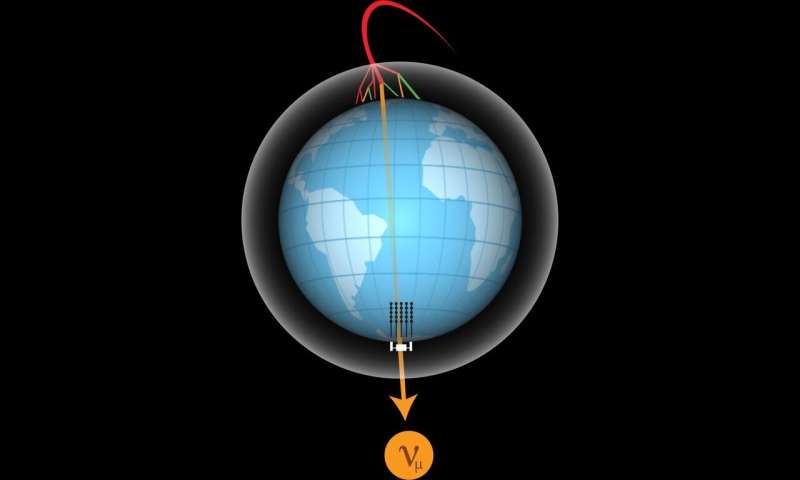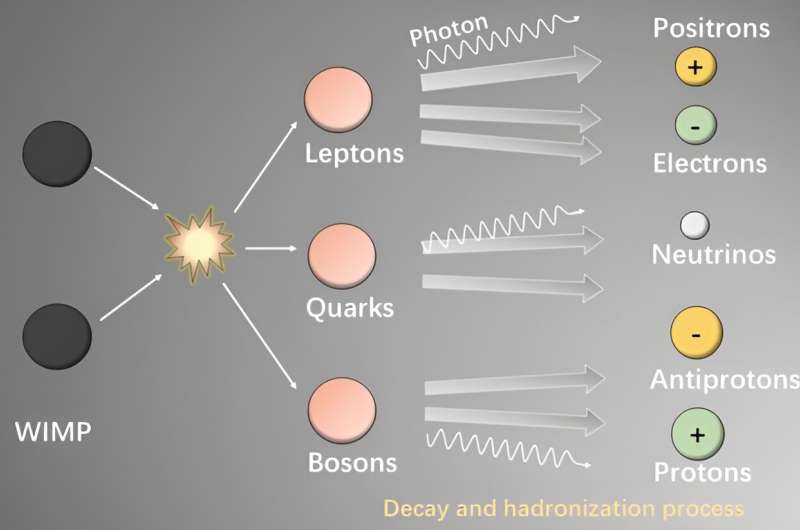This article has been reviewed according to Science X's editorial process and policies. Editors have highlighted the following attributes while ensuring the content's credibility:
fact-checked
preprint
trusted source
proofread
Astronomers search for dark matter annihilation at the center of the Earth

Dark matter is one of the thorniest mysteries of modern cosmology. On the one hand, astronomers have gathered a wealth of supporting evidence through galaxy clustering statistics, gravitational lensing, and cosmic microwave background fluctuations, on the other hand, there are no particles in the standard model of particle physics that could account for dark matter, and we haven't been able to detect its effect locally.
It's a solid theory where we just can't seem to fully pin it down. That usually means we're just a breakthrough away from confirming or overthrowing dark matter. The good news is that there are several projects searching for dark matter, and one of them, the IceCube Neutrino Observatory, has just released a new result.
As a neutrino observatory, IceCube can't detect dark matter directly, but it can detect local effects of dark matter that produce neutrinos. One major model for dark matter particles it's comprised of massive particles that interact mostly with each other and weakly with regular matter particles. These weakly interacting massive particles, or WIMPs could be lurking in the core of Earth.
If the WIMP model is true, when dark matter collides with a massive object such as a planet or star, collisions with dense regular matter should slow it down, causing some WIMPs to be gravitationally trapped within the body. These WIMPs would collide with each other from time to time, causing neutrino-producing particle decays. This means there should be an excess of neutrinos coming from the center of Earth, which IceCube could detect.

In this study, the team looked at a decade's worth of data from IceCube and found no evidence of excess neutrinos. Given the energy cross-section of IceCube detectors, this effectively rules out WIMPs with a mass greater than 100 GeV, or a bit more than 100 proton masses. This result is in agreement with other studies that also rule out high-mass WIMPs. Lower mass dark matter particles are still possible, but we now have a long history of ruling out dark matter candidates.
There are plans to upgrade IceCube to increase its sensitivity, and this will allow further dark matter tests looking for lower mass WIMPs. This might allow us to finally detect dark matter locally, but we are quickly running out of options. We've ruled out several dark matter candidates thus far, and we might have to look at alternatives such as modified gravity. But that's a story for another time.
More information: Giovanni Renzi et al, Search for dark matter annihilations in the center of the Earth with IceCube, arXiv (2023). DOI: 10.48550/arxiv.2308.02920
Journal information: arXiv
Provided by Universe Today




















